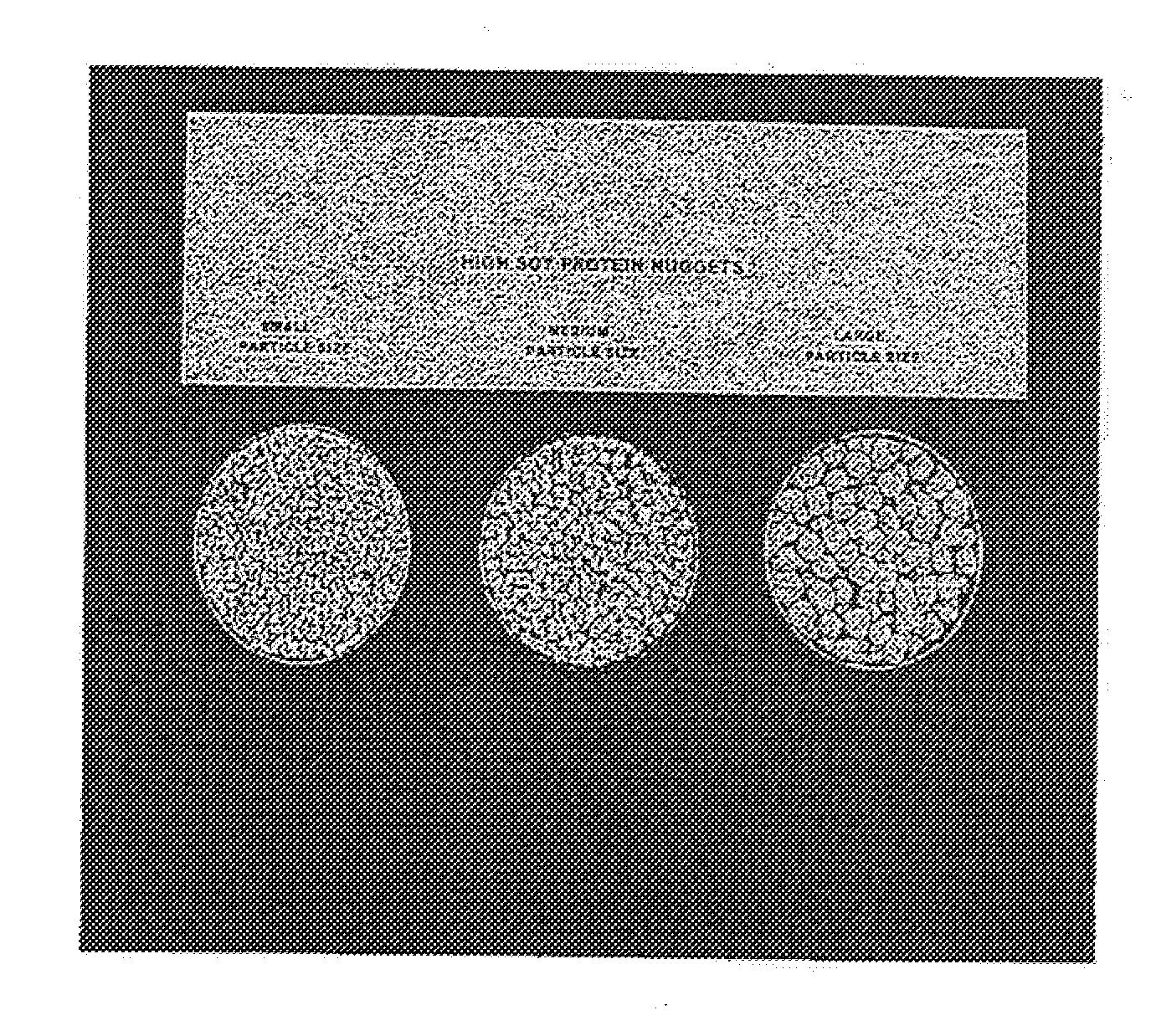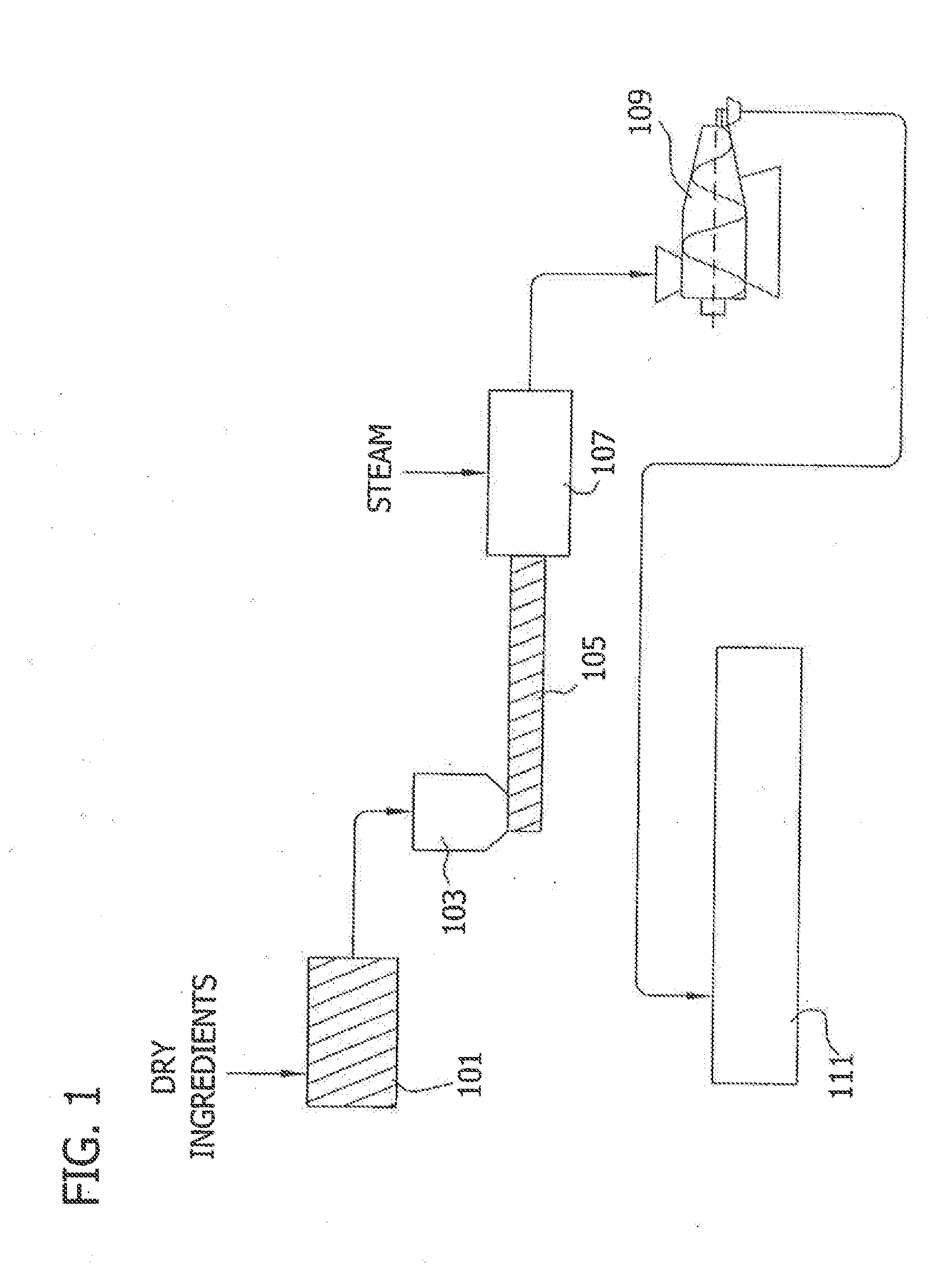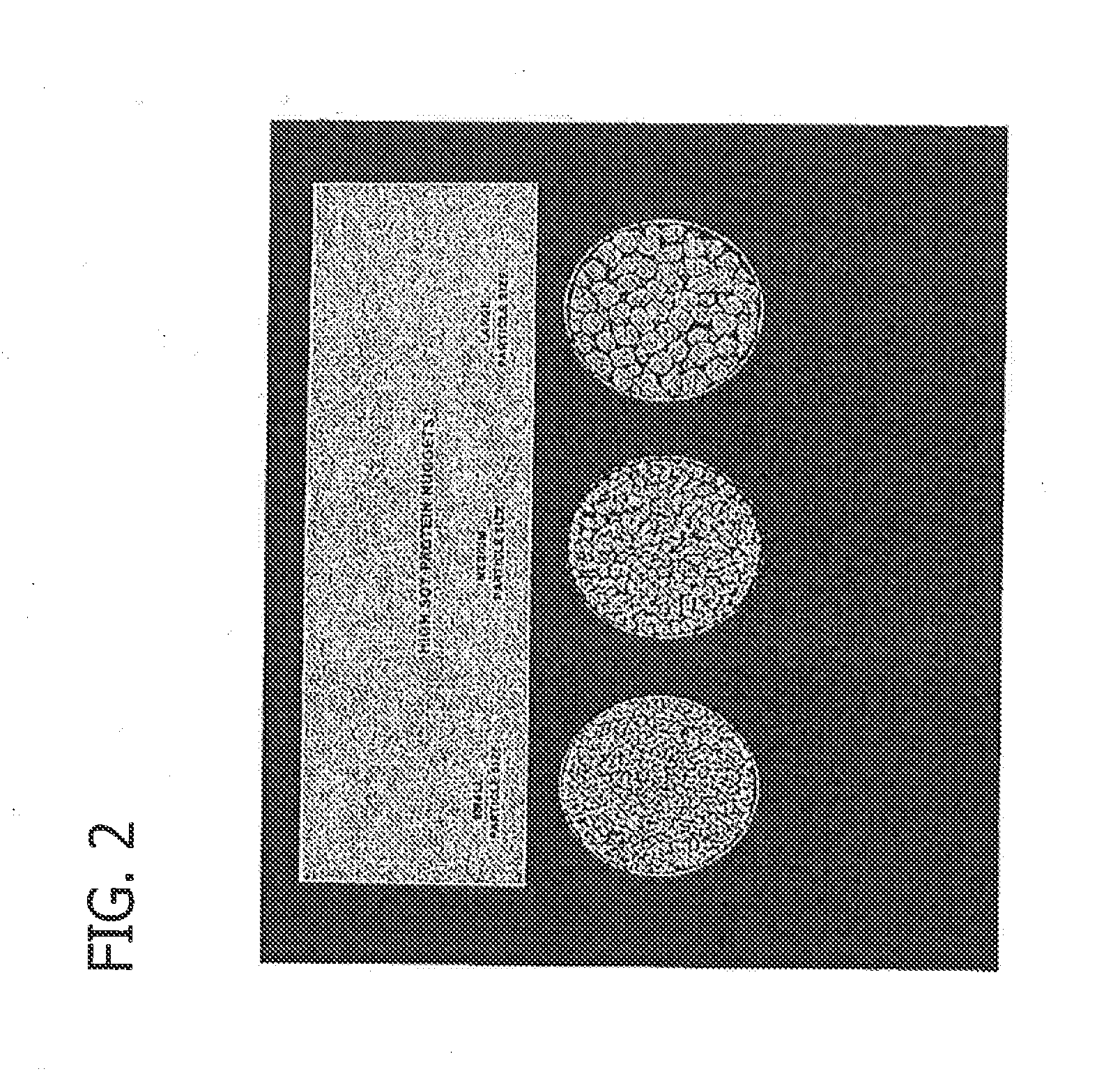High Soy Protein Nuggets and Applications in Food Products
a technology of soy protein and nuggets, applied in the field of food materials, can solve the problems of reducing the gel strength of the mixture, limited use, and increasing temperature, pressure and shear, and achieves high protein levels, high concentration, and low density
- Summary
- Abstract
- Description
- Claims
- Application Information
AI Technical Summary
Benefits of technology
Problems solved by technology
Method used
Image
Examples
example 1
[0145]This example illustrates the preparation of soy protein nuggets comprising 70%, 75%, 80%, 85%, and 88% soy protein using various feed mixture formulations.
[0146]The feed mixtures are described below in Table 3.
TABLE 3Product70%75%80%85%88%Feed compositionproteinproteinproteinproteinproteinSUPRO ® 67063.6%68.2%71.7%77.3%100%SUPRO ® 62015.9%17.0%17.8%19.3%0%Tapioca starch18.2%12.5%9.0% 3.4%0%Fibrim 2% 2%1.2% 0%0%NaCl 0.3% 0.3%0.3% 0%0%
[0147]As shown in Table 3, the weight ratio of hydrolyzed to unhydrolyzed isolates is approximately 4:1 in the feed mixtures for preparing the 70%, 75%, 80%, and 85% protein nuggets. The 88% protein nuggets are prepared from a feed mixture which did not contain an unhydrolyzed isolate.
[0148]The ingredients of each feed mixture are mixed in an ingredient blender for 5 to 10 minutes to ensure uniform distribution. The dry feed mixture is pneumatically conveyed to a volumetric feeder (i.e., hopper) and fed to a pre-conditioning tank at a rate of 6...
example 2
[0167]This example illustrates the preparation of Soy Protein and Whey Protein (Isolate and Concentrate) nuggets; and combinations of both proteins at different ratios comprising a minimum level of 70% protein in the final nugget product.[0168]Soy Protein Isolate, SUPRO® 8000, from The Solae Company (St. Louis, Mo.), 88% protein, (as is).[0169]Whey Protein Isolate BiPro, from Davisco Foods, Inc (Eden Prairie, Minn.), 90% protein, (as is).[0170]Whey Protein Concentrate WPC80, from Farbest Brands (Plain City, Ohio), 78% protein, (as is).[0171]Native Tapioca Starch, from Avebe Corp. (Princeton, N.J.).[0172]Dicalcium Phosphate, from Astaris Food Phosphates (Webster Groves, Mo.).[0173]Soy Lecithin Powder, from The Solae Company (St. Louis, Mo.).
TABLE 8SampleSampleSampleSampleSampleSampleIngredients12345Supra ® 8000 ISP80.0%70.0%40.0%60.0%20.0%Nat. Tapioca Starch19.7%19.7%19.7%19.7%19.7%Whey Protein Isolate0.0%10.0%40.0%20.0%60.0%BiproDicalcium Phosphate0.3%0.3%0.3%0.3%0.3%
TABLE 9SampleIn...
example 3
[0199]Textured soy / calcium caseinate or soy / sodium caseinate and caseinate products were prepared at different ratios and protein levels, from 70% to 90% with various dry feed samples as presented in Tables 14 and 15. At 70% soy / caseinate textured products, the ratios of soy protein isolate (SPI) to calcium-caseinate, and soy protein isolate to sodium-caseinate in the dry feed samples were 5:1, 2:1, 1:1, and 1:2. The control 70% and 80% soy protein texture products had 5:1 ratios of hydrolyzed to unhydrolyzed soy protein isolate in the dry mix samples. The 80% and 90% soy / calcium caseinate or soy / sodium caseinate textured products also had 5:1 and 5.67:1 in the dry mix samples. In the 80% and 90% calcium caseinate or sodium caseinate extruded products, the dry mix had no soy protein in the samples as presented in Table 15.
TABLE 14Soy and Soy / Caseinate Proteins Formulations with 70% Protein at Different Ratios.SampleSampleSampleSampleSampleSampleSampleSampleSample131415161718192021(%...
PUM
| Property | Measurement | Unit |
|---|---|---|
| density | aaaaa | aaaaa |
| density | aaaaa | aaaaa |
| density | aaaaa | aaaaa |
Abstract
Description
Claims
Application Information
 Login to View More
Login to View More - R&D
- Intellectual Property
- Life Sciences
- Materials
- Tech Scout
- Unparalleled Data Quality
- Higher Quality Content
- 60% Fewer Hallucinations
Browse by: Latest US Patents, China's latest patents, Technical Efficacy Thesaurus, Application Domain, Technology Topic, Popular Technical Reports.
© 2025 PatSnap. All rights reserved.Legal|Privacy policy|Modern Slavery Act Transparency Statement|Sitemap|About US| Contact US: help@patsnap.com



